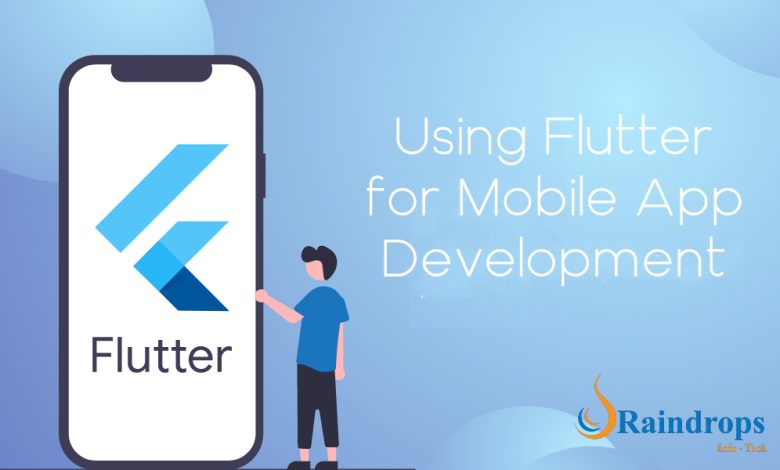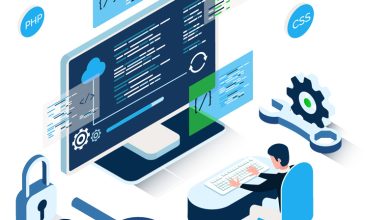Using Flutter for Mobile App Development: The Smart Man’s Choice

With more than a hundred thousand mobile apps released on the Android Play Store every month (and an additional 30,000+ on iOS platforms), business isn’t just booming in mobile app development.
It’s thriving, and if media usage experts are right, mobile usage will only go up in the following years, reaching sky-high even as soon as 2025.
What that means for businesses, whether online or physical, is that today, having a mobile app developed is essential if they want a customer base spanning worldwide, not to mention the lengths an app goes to in helping with customer retention.
The Layman’s Introduction to Mobile App Development, Frameworks, and Flutter
Today, having a mobile app developed for your business (or a game or whatever kind of app you want) means choosing a language framework to build it on. Think of it as a foundation for the app, with the features, aesthetics, and changes you want to be added later on. And you can also connect top mobile app development companies in India.
We’ll give it to you straight: when it comes to language frameworks, we recommend investing in an experienced flutter app dev. Raindrops Infotech is best mobile app development company in Ahmedabad .
Flutter is a comprehensive framework with several useful libraries and unique features like Hot Reload, being open-source, and quick rendering processes to speed up the dev time.
But still, you might say, there are lots of frameworks with those features. Why should you go for flutter app development especially? That’s exactly what we’re going to talk about.
But first, however, we’re going to talk about something that’s much more important: what features should you be looking for in the framework used to develop your mobile app?
Choosing the Right Framework: An Important Decision
When it comes to mobile app frameworks, the market’s so diverse we sometimes get lost ourselves.
You, on the other hand, should remember that it’s never tough to choose the right framework. All you’ve got to do is ask yourself three crucial questions:
-
The Framework: What advantages and disadvantages do I get by choosing this particular framework?
-
The Team: How convenient is the framework to work on for the development team?
-
The Existing Support: Are community support and dev support available for the framework?
These questions are the simplest ways to determine the right development framework for your app. Yet, if you don’t have experience choosing a framework, the decision can still be pretty hard.
Features to Look for in Your App Development Framework
That’s why we’ve outlined some things you should look over so you can choose the right framework, starting with its capabilities, ease of use, and some other factors:
1. Built-in Features
Frameworks are essentially a foundation for mobile app development with a set of built-in features. The rest is up to the flutter app development company to develop or use community resources available online.
Ideally, you want to be looking for full functionality in the framework.
The more features that come built into the framework, the less time you spend adding them to the framework. That means the more comprehensive the framework, the less time you spend on the dev process.
You want to be looking for features like:
-
Interesting push notifications
-
Structure for loyalty card programs
-
Menu and Ordering features
-
Social Media and News feeds
-
Availability of Advanced Analytics
-
Support for a Mobile Store
2. Performance
For developing apps more complex than your standard shopping app (think applications of a larger scale), you also want to look at the framework’s performance.
That means looking at the technical side of things and considering stuff like:
-
The size of the framework as it has a direct impact on the size of your app.
-
How the framework loads content and resources.
-
Runtime performance (essentially how pages perform when running, instead of loading).
-
The optimization libraries used for the framework.
3. Scalability
While it’s essential to get a full suite of features for your app, you should also remember to keep it small, or you could end up overwhelmed by the development costs.
Many people forget that if their app sees success, they’ll have to expand it with more pages, more content, and more features.
When choosing a framework, it’s crucial to choose one that lets you quickly scale your operations up or down, depending on the need of the hour. That means adding or removing features, servers, and even entire app sections as needed.
We mention this because if you choose the wrong framework, your dev team could end up spending days doing triple the work that a framework with easy scalability needs.
4. The Learning Curve
Every framework has a learning curve based on how complex it is. Most of them come with a starting tutorial, but that might not be enough if you’re developing a complex app.
If you’re new to mobile app development, we’d really advise choosing a framework that requires a minimal investment in getting started, along with one with available community resources.
The simpler the framework, the easier the development process will be. It’ll also be cheaper to hire new developers to work on your app.
That being said, here are a couple of things we’d say are the most giant red flags:
-
Complex Starting tutorials that don’t make sense to beginners.
-
Obscure and vague APIs that require experience to use.
-
A framework that doesn’t come with the proper documentation.
-
A framework with horrible data management practices or one that requires significant monetary investment.
All About Flutter: The Quickest Mobile App Dev Framework Out There
A Short Introduction to Flutter and Its Capabilities
Before we get into all the technical bits for the nerds, let’s talk about Flutter. Flutter is an open-source app-development software framework released by Google.
A comprehensive, varied framework, Flutter allows you to develop apps for Windows, macOS, Linus, and even mobile platforms like Android and iOS. It uses a single codebase for multiple platforms, making cross-platform use one of its in-built benefits.
The best thing about Flutter is that it isn’t just a framework or a library. It’s a fully complete SDK (Software Development Kit).
It comes with a full suite of things you’ll need for the dev process, like libraries, frameworks, documentation, tutorials, and community support channels.
Compared with more famous frameworks like React or Angular, it’s hard to deny Flutter’s a goldmine for developers who want an easy-to-learn framework for cross-platform development.
The Best Reasons You Should be Using Flutter Today
Since Flutter hasn’t reached React’s levels of fame, you’ll commonly see developers asking what makes it such a perfect fit for cross-platform development today.
Below, we’re going to be taking a look at some of the most significant advantages Flutter has for dev teams, along with why it’s become such a popular dev framework today:
1. Cross-Platform App Development
This is the fourth time we’re saying it, but that’s only because it’s the most essential thing here:
The best thing about Flutter, flat out, is that it enables cross-platform app development for both PC (Windows, macOS, Linux) and Mobile (Android and iOS) platforms.
Typically, you’d have to choose a particular platform to develop your app for. With Flutter, that choice becomes null and void, as this easy-to-use framework uses a single codebase for all platforms.
It dramatically reduces the headaches associated with developing apps for different platforms. Flutter also saves you a lot of money for later porting your app to another platform.
2. It Supports Older Versions of the Platforms and OS
With new versions of different platforms coming out every day, developers are facing a new problem:
-
They’re developing apps for newer versions of platforms while everybody’s on the older generation.
-
A budget limitation forces them to base their app on an older version of the chosen platform.
Flutter application development solves this problem in a single fell swoop: your app appears the same, regardless of whether it’s running on an older platform version. That applies to both PC and Mobile platforms!
3. It Speeds Up the Dev Process
“The early bird gets the worm” is a common saying, and mobile app development is kind of the same thing.
It’s a profitable field, but if you show up an hour late and with confetti in your hair, we’re afraid you’re not going to make much money.
That’s why it’s vital to pick a framework that helps you speed up the dev process, like Flutter.
Flutter comes with “Hot Reload,” which injects updated source code files into a running Virtual Machine. After the VM updates using the new versions of fields and functions, you get an ultra-fast, bird’s-eye view of the changes through a completely rebuilt widget tree.
4. High-End User Experience
At the end of the day, having a great user experience will be your goal when designing your app.
Compared to Controller or View-based architecture, Flutter’s idea of using ready-made widgets for app development makes for a more straightforward development process for complex apps.
You can combine different widgets to create a unique UX, and with a bit of planning ahead, it’s not hard to design a UX that your customers will love.
5. It’s Simply A Better Framework
You might be thinking about going for React or Xamarin regardless of all this. Still, maybe you’ll reconsider after hearing this:
Back at the 2017 iOS summit, Flutter showed higher and better performance levels than both React and Xamarin.
We’re talking about less time spent in development, faster performance during runtime, and less load-time quickly, making it the favorite of most attending parties.
6. Ongoing Support From Google
Support is another area where Flutter’s going to make your life easier.
Rather than deal with devs who might or might not respond, support for Flutter comes directly from Google itself, as the Internet giant uses the technology for designing its own apps.
If you want proof, look up Google Fuschia. It’s an open-source OS designed by Google, and instead of being Linux-based, it uses a unique kernel called Zircon. After debuting as a code repository on GitHub, Fuschia saw its first consumer release in May 2021.
The Takeaway: What Flutter Can Do For You
People considering investing in flutter app development services need to know a simple fact: this golden tech isn’t a framework. It isn’t a framework. It isn’t just another run-of-the-mill SDK, either.
Instead, Flutter is an all-encompassing, comprehensive solution to most, if not all, problems modern-day devs face.
It offers higher FPS with lower lag, better runtime performance, lower loading times, and a much simpler dev process through a unique, reimagined widget-based architecture.
If you’re looking for the perfect framework, we feel confident saying it doesn’t get much better than Flutter.





